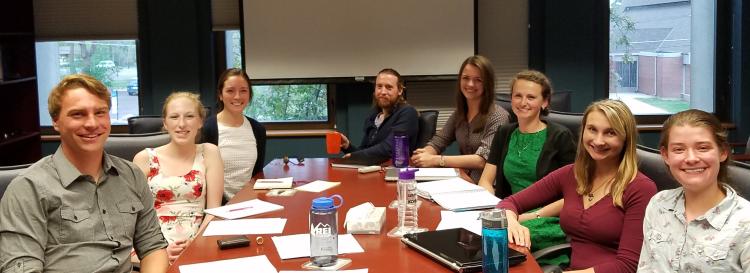Part 1: Students Funding Students

[Editor’s note: This is part 1 of a 4-part series looking at the student-led Engineering Excellence Fund]
Obtaining money for research and projects can be difficult to come by, especially for students who have yet to establish themselves in their given fields. Without this monetary component, ideas can be left unrealized. At CU Boulder, a student-led pot of money works to solve this problem.
Managing more than $1.5 million each year, the Engineering Excellence Fund (EEF) bridges the gap between ideas and their manifestations for engineering students at CU Boulder. The same people who benefit from the fund are those who pay into it, as the EEF comes from engineering student fees.
“It’s by the students, for the students,” says Trevor Bennett, former chair of the EEF and now a graduate member of the committee. “We are representatives of the student body, so it is our job to apply a critical eye to the proposals we see in order to invest in the students’ interests.”
A committee of 12 members manages the fund: six undergraduate students, three graduate, and three non-voting faculty/staff advisors. Students vote on how to spend and fund their peers’ money and projects, a unique opportunity among major universities and colleges.
“Many engineering student groups, and pieces of equipment that student groups utilize at CU Boulder, are funded by EEF,” said Bennett. “It’s a pooling of resources to encourage and support innovative ideas.”
Unlike many of the long-term investments made at the university, the fund has a swift turnaround time—financing projects with the money paid into it that year. This gives engineering students access to the money they put in for projects that will further their education and passions.
“We ask, what investments should we make right now for the current student body?” said Bennett.
The proposal process is open to all engineering students with an idea. The fund handles proposals from different tiers offering varying amounts of funding. Mini proposals, which max out at $3,000, are the most commonly submitted and funded. How they are chosen is based on four pieces of criteria: uniqueness and innovation, student impact, financial sensibility, and quality.
Increasing awareness of the fund is a priority.
“It’s not general knowledge, and we want to change that,” said Bennett. “If students are contributing to the fund, they should be aware of this resource to which they have access.”
The next call for proposals begins early in the Fall semester. More information into the fund and the proposal process can be found at eef.colorado.edu.
Tim Drugan-Eppich is an administrative assistant in the College of Engineering and Applied Science.

